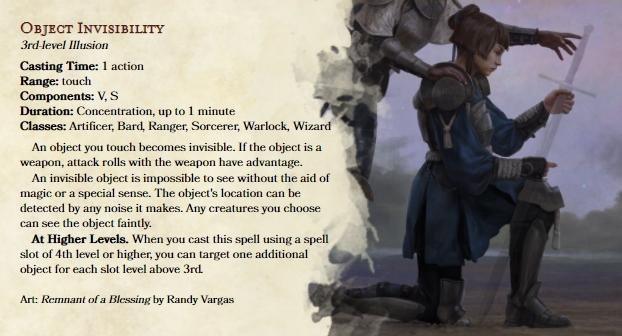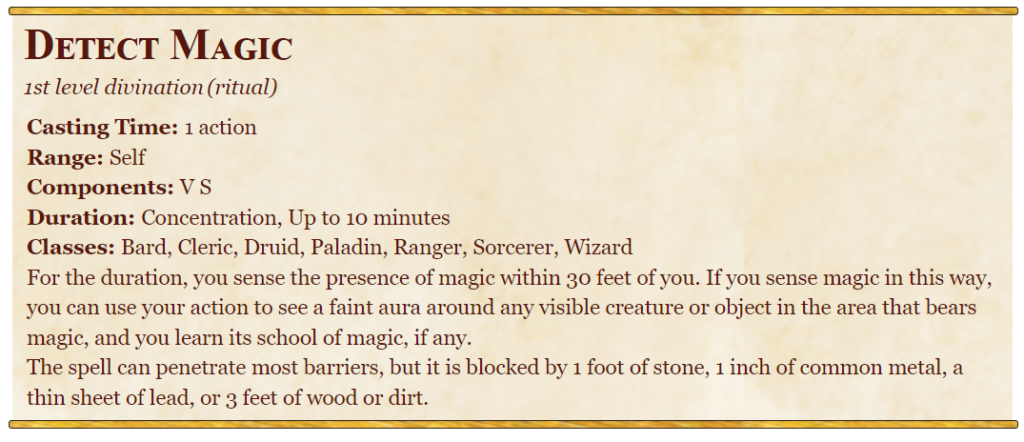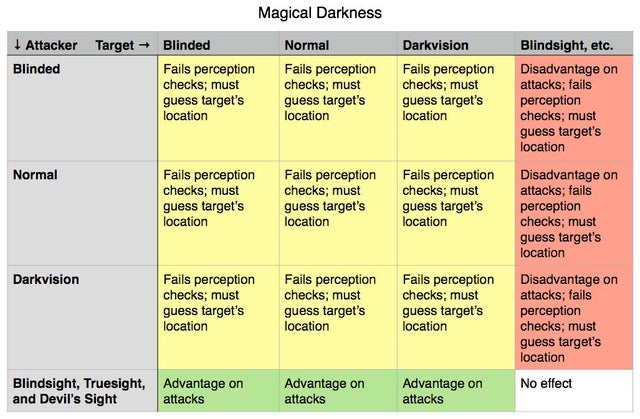D&D comes with a bundle of magic item cards and spellbook cards. For invisibility spells, you have 3 main caster classes. It has Warlock, Wizard, Sorcerer, Bards, and Artificers. However, the duration of the defined Invisibility is one hour. It also has a concentration spell that ends your Invisibility after you cast another concentration spell. Too much to take? I would say, do not stress much. Go on to learn the concept of Invisibility 5e from a deeper perspective.
How Does Invisibility Works in DnD?
- Invisibility (2nd level spell) in D&D emerges the moment a creature is touched. As it is said, a target remains to be invisible (including everything he is wearing or holding) until the spell ends. The Carry-ons of the target remain to be an invisible creator till the time it is in hold with the same. An invisible creature can also make the whole crowd invisible when his character reaches up to higher levels.
- Another higher level of invisibility spell is the greater invisibility spell which is the 4th level spell. This is only available to Sorcerers, Wizards, and Bards. With this greater invisibility, one can cast another spell or attack somebody without ending their invisibility. Attacks can be ranged, melee, or spell. The major difference between greater invisibility and invisibility is that greater invisibility lasts for 1 minute than a full hour. Greater Invisibility in 5e also works with ‘TOUCH’. It means that to cast a spell on someone else by touching, you should be standing next to them. With touch, you cannot make the whole party invisible. It only means you and the other person. Make a note: This is a concentration spell, so if you cast another concentration spell, this will end the invisibility.
- A Fifth level spell is Mislead Spell. It is only available to Bards and Wizards. Mislead spell is a concentration spell that lasts for an hour. You cannot cast a spell on anybody, but your own self, with the Mislead Spell. This spell allows you to become invisible during the same time your double illusory appears. In other words, your double sets you free to do anything you wish to do by filling up your space. Your double can move up to twice your speed, speak, gesture, and behave according to your action. On the other hand, you can switch in between with either your own eyes and ears or the doubles. However, with double eyes and sense, you can not note your environment. Although, the invisibility is going to end when you cast any other spell-like attack.
Can Detect Magic See the Invisibility 5e in DnD?
Fortunately, Detect magic cannot see the Invisibility 5e in DnD. The creature’s aura cannot be visible. However, the magic within 30 feet can be detected. It can be magical items carried by the creature. If magic is felt, you can use your power to see a faint aura of any creature or item that reveals its presence. An exact idea of an invisible creature or the item cannot be detected. But you can grasp the hint of magic that prevails within 30 feet of distance. Initially, it is detected by a miniman. However, it doesn’t give leverage to the evil mage to cast his concentration on both fly and Greater Invisibility at the same time. You cannot see the aura of the detected magical invisible creature unless it is possible to see the monster.
Does Invisibility Mean You are Unheard or Unnoticed?
You might feel it amusing, but the reality is your invisibility 5e in DnD doesn’t make you unheard or unnoticed. The voice of you walking on the floor or bumping into an object is going to reach the ears of your visible partners. Also, your shoes are going to leave an impression on the muddy/dusty floor anyhow. Moving or walking or doing any noisy activity is going to make you notice in a quiet room. This will require stealth checks depending on who is paying attention to you.
What is the Significance of Blindsight & TrueSight in DnD 5e?
Blindsight creatures have the advantage to perceive their surroundings without having a hold of their sight. Although, it is up to a certain radius. In other words, even if you are invisible completely, blindsight doesn’t need sight to spot you. Creatures without eyes, such as oozes, and creators with heightened senses, such as bats and dragons, have this sense. Whereas, Truesight creatures in DnD have a blessing to see in normal and magical darkness up to a certain range. They can see invisible creatures and objects, and detect visual illusions automatically. Truesight creatures also can save throws against each other. Furthermore, they can also perceive the original form of a shapechanger or a creature that is transformed by magic.
What are the Benefits of Being Invisible in DnD 5e?
Invisibility 5e in D&D plays a major role in Dungeons & Dragons. It leads you above and before every visible player with stealth checks. There are many vital benefits of Invisibility which are stated as follows:
You can listen to any conversation.You can do a task without being caught.You can walk around different places.During combat, You can choose a higher number by rolling two attack dice. This is possible when your attack is going to end your invisibility. When visible attackers track you, they have the disadvantage of choosing a lower number from the two rolled dice.You cannot be targeted with a spell unless and until you are clearly visible to the attackers. With your stealth checks, a creature trying to detect you will get a perception check.
Wrapping Up
If you are owning greater invisibility, this might be the best character for you to play. Being unseen allows you to make the most of your surroundings. If you are smart enough to catch the shot and smooth enough to remain unheard, you are going to rock Invisibility 5e in Dungeons and Dragons. Play on and write down below if you find anything odd about this. PathofEx is at your service 24/7, and You Know That..! Good Luck, Champions! Au revoir. Bon jeu..!!
Δ










